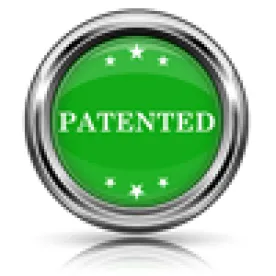Takeaway: That prior art disclosures would not be combined by businessmen for economic reasons is not as relevant to the issue of obviousness as the fact that skilled persons in the art felt that there was some technological incompatibility that prevented their combination.
In its Final Written Decision, the Board concluded that claims 1-7 and 10-12 of the ’867 patent are unpatentable. At the same time, the Board found that Petitioner had not shown by a preponderance of the evidence that claims 8, 9, 13, and 14 of the ’867 patent are unpatentable.
Petitioner had filed a Petition seeking inter partes review of claims 1-14 of the ’867 patent. The ’867 patent relates to the recording of the operation of a vehicle in order to facilitate emergency response in the event of a collision. The grounds of unpatentability proposed by Patent Owner were: (1) obviousness of claims 1-7, 10, and 11 under 35 U.S.C. § 103 in view of Aoyanagi, Vollmer, and Steiner; (2) obviousness of claims 8, 9, 13, and 14 under 35 U.S.C. § 103 in view of Aoyanagi, Vollmer, Steiner, and Fincham; and (3) obviousness of claim 12 under 35 U.S.C. § 103 in view of Aoyanagi, Vollmer, Steiner, and Sorden.
The Board first discussed claim construction. Because the ’867 patent is expired, the Board interpreted the claims using the standard set forth in Phillips v. AWH Corp., 415 F.3d 1303 (Fed. Cir. 2005) (en banc). The claim terms that the Board interpreted under this standard included “monitoring,” “capturing/recording,” “permanent memory,” and “information indicating whether the vehicle has been involved in more than one collision/information . . . includes the number of collisions.”
The Board agreed with Petitioner that claims 1-7, 10, and 11 would have been obvious under 35 U.S.C. § 103 in view of Aoyanagi, Vollmer, and Steiner. In particular, the Board agreed with Petitioner that each element of the claims is taught by Aoyanagi, with the exception of the language in the claims reciting “automatically sending a wireless distress signal from the vehicle in response to detecting the collision, the distress signal indicating that the vehicle has been in a collision” and “recording into a permanent memory values of three or more of the production-related parameters of the vehicle captured over a finite period of time before detection of the collision.” Likewise, the Board agreed with Petitioner that the first of these recitations would have been obvious in view of Vollmer, and the second of these recitations would have been obvious in view of Steiner. Although Patent Owner had presented evidence for the purpose of showing commercial success as an indicia of nonobviousness, the Board found that “[o]n balance, the evidence of obviousness outweighs the evidence of nonobviousness[.]”
The Board also agreed with Petitioner’s assertions with respect to dependent claim 12, which additionally recites that “additional information indicating whether aid may be required includes a rollover status of the vehicle.” After noting that Petitioner had not made any argument with respect to claim 12 beyond the arguments that it provided for independent claim 1, the Board proceeded to conclude that “Sorden discloses sending, in the event of a collision, the orientation of the vehicle . . . , and that one with ordinary skill in the art would have known to include that feature in the combination of Aoyanagi, Vollmer, and Steiner.”
The Board did not agree with Petitioner’s assertions in regarding to claims 8, 9, 13, and 14. In particular, the Board was not persuaded by Petitioner’s proposed reasoning why one skilled in the art would have found it obvious to include the recited acceleration and deceleration data in the wireless distress signal from the vehicle. Among other reasons, the Board noted that while Petitioner did cite to the declaration testimony of expert David McNamara, the Board nevertheless concluded that “Mr. McNamara’s declaration contains no testimony to the effect that Fincham discloses sending vehicle acceleration and deceleration data in a distress signal.”
Toyota Motor Corp. v. Leroy G. Hagenbuch, IPR2014-00123
Paper 32: Final Written Decision
Dated: March 3, 2015
Patent: 8,532,867 B1
Before: Jameson Lee, Michael W. Kim, and Jeremy M. Plenzler
Written by: Lee
Related Proceedings: Hagenbuch v. Toyota Motor Sales, U.S.A., Inc., No.1:13-cv-6713 (N.D. Ill., filed Sept. 18, 2013); IPR2014-00124



 />i
/>i
